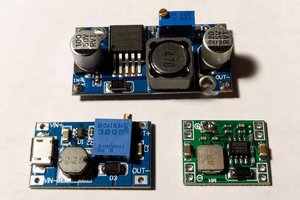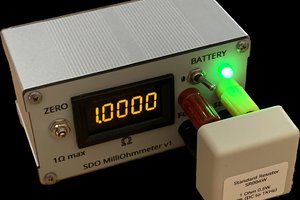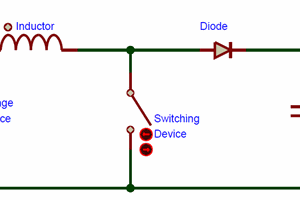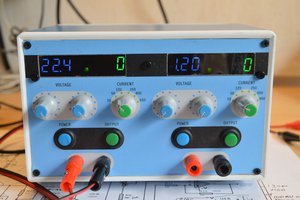A Dollar Store Switch Mode Buck Power Supply
Karl Berger, W4KRL
While 
The unit is useful as is. A lot of amateur radio stations these days use 12Vdc for their rig power and have 5V accessories. However some accessories often use 6, 7.5 or 9Vdc. A modified DSU provides an efficient and very inexpensive way to power lower voltage accessories from a 12V bus. It turns out that only a few simple modifications are needed to adapt the unit to another output voltage. The job is made even easier by using one of the design tools available on the Internet[2]. First, let’s modify the DSU then look into the theory and design.
The amplified speakers for my station
computer use a 9V battery so I modified the DSU to output 9V with 12V input. I
also tried to reuse as many parts as possible. For example, RSC in
the DSU is a current sense resistor with a value of 0.22 Ohms. Equation 7 below
tells us that this will limit the peak switch current to 1.36A. Equation 6 says
that the peak switch current is twice the output current so maximum
To modify the unit take off the fuse ferule and pry apart the case. Unsolder the fuse spring, the wired-in USB connector (JB) and the one mounted on the circuit board (JA), resistors R1, R2 and R3, and any wires remaining on the board.
The LED on my DSU was soldered to pads on the back side of the board so that it would not interfere with the USB connectors. To remount the LED to the thru-holes provided on the board, remove the LED and be sure to remember the polarity. There is probably a flat on the cathode side of the cathode side. Reinstall it in the thru-holes.
For 9V operation replace the resistors as follows: R1 = 1K, R2 = 6.2K, R3 = 1.2K. I didn’t have a 6.2K resistor for R2 so I used 5.6K. That reduced the output voltage to 8.25V which is no problem for most 9V devices.
While you are at it you should dress up any of the original components that may be poorly mounted or soldered. I routed the output wires through existing holes in the board to provide some strain relief.
Test your modified unit before going any further. My first test failed because I had the LED in backwards...
Read more » W4KRL
W4KRL





 Kuba Sunderland-Ober
Kuba Sunderland-Ober

 w_k_fay
w_k_fay
Publix Survey is the most famous American supermarket and grocery store in Lakeland, Florida. They were founded in 1930 by George W. Jenkins, Nearly 1,306 Locations. Cosmetics, Skin products are available at a 50% discount in Publix stores. Publix is the biggest competitor for Dollar stores in the USA.
When I first learned about Publix's survey, I had yet to learn what to expect. However, I was pleasantly surprised with the quality of the questions and the time they took to complete them. The Publix Survey program gave me a chance to provide feedback on a product and win a $1000 reward in return. After sharing our shopping experience, we are getting into the publix sweepstakes list.
The official Survey link of Publixsurvey 2023 is here.
Tesco stores are also top-rated in the UK, and we can win £1000 Gift Card & 25 Club Points by taking Tescoviews 2023 Survey.